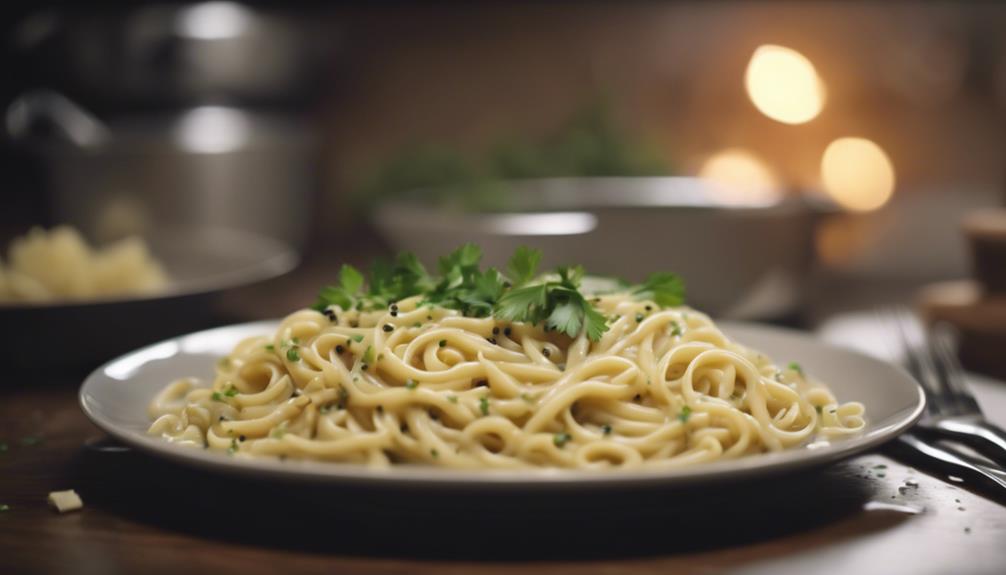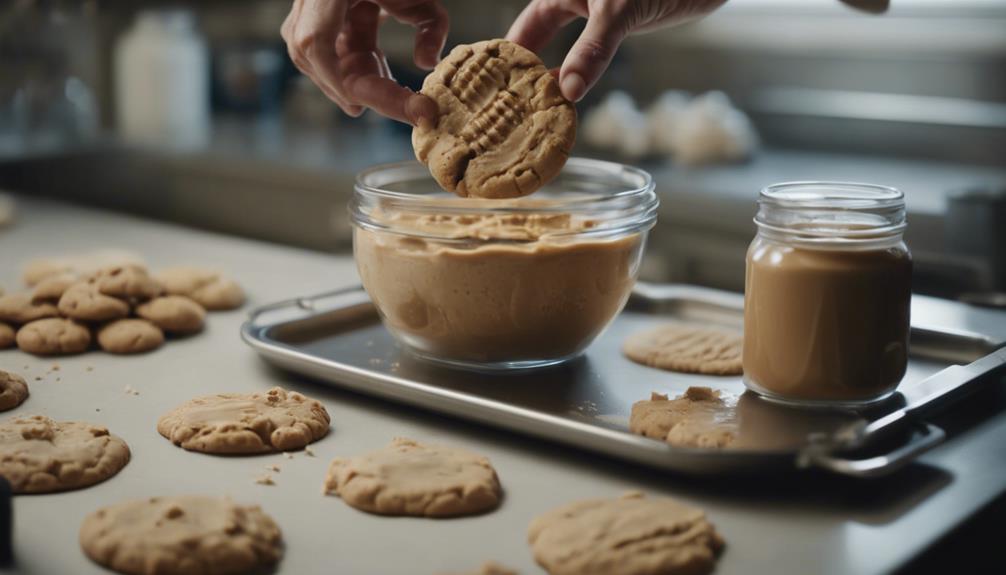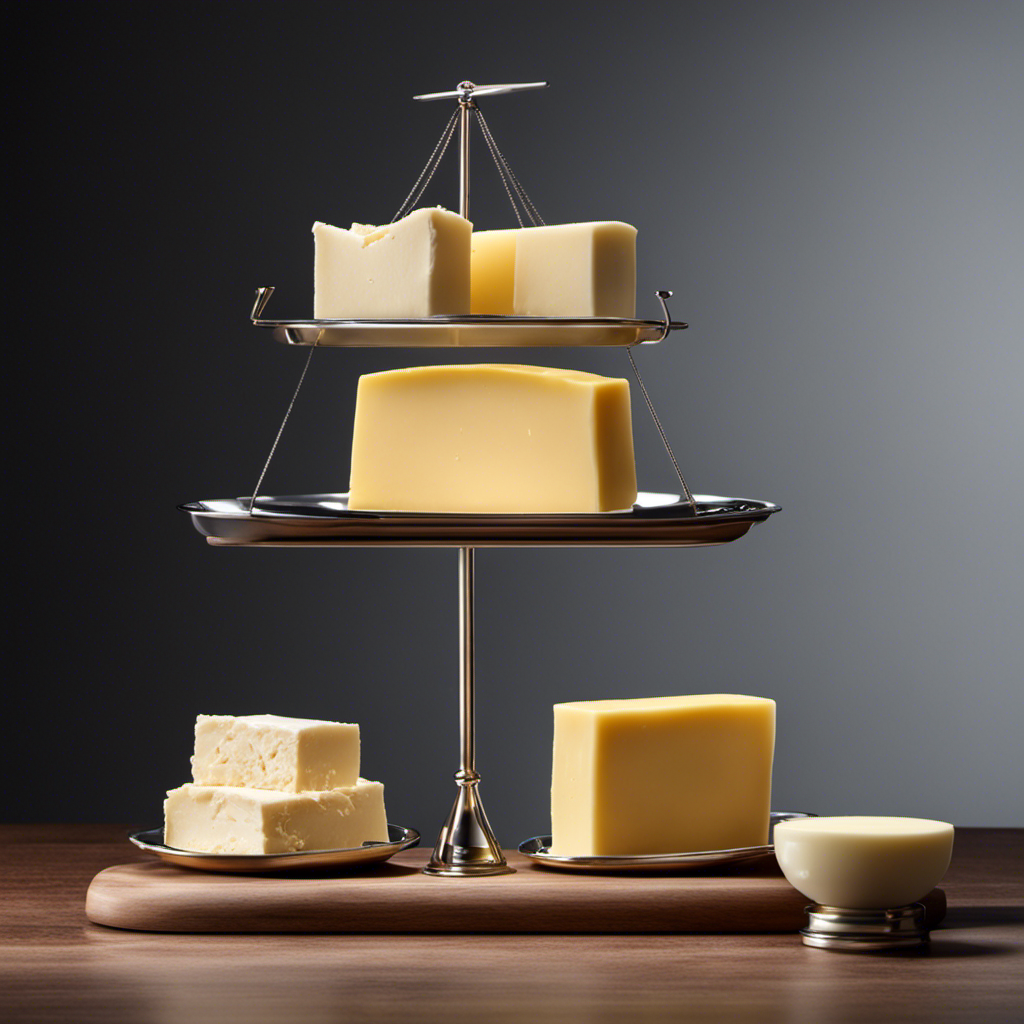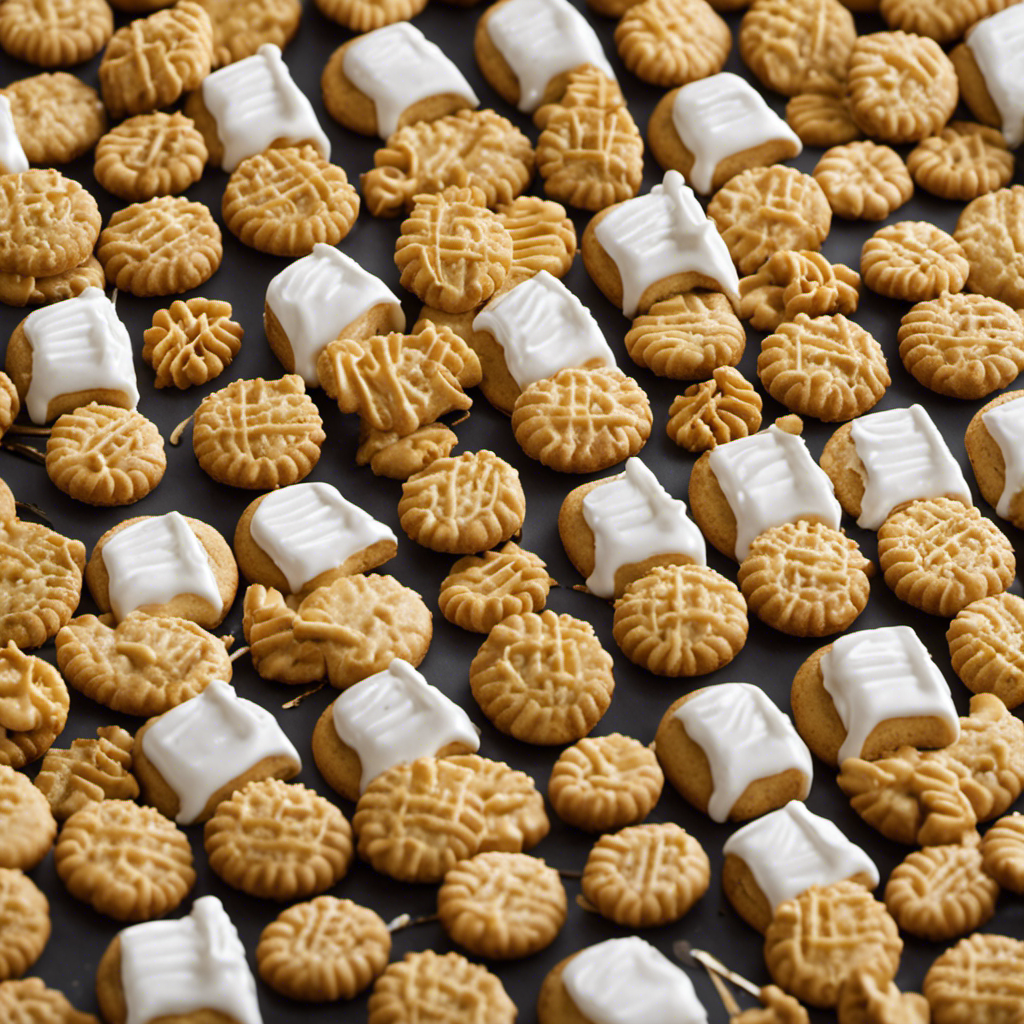Looking for a delicious meal for those hectic nights? Try this butter noodles recipe. Boil noodles until tender, then mix with butter, Parmesan cheese, salt, and pepper. Toss well for a creamy and savory dish that will leave you feeling satisfied. For extra flair, add in broccoli, garlic, or protein of your choice. Adjust the butter amount based on your preference. If you want to enhance the flavor, consider using different pasta types or adding herbs. This quick and easy recipe is perfect for busy evenings when you need a comforting and tasty meal in a flash!
Key Takeaways
- Boil noodles al dente for ideal texture.
- Toss with butter, Parmesan, salt, and pepper for flavor.
- Customize with broccoli, garlic, or protein for variety.
- Store leftovers for up to five days in the fridge.
- Reheat easily in the microwave or on the stove.
Buttered Noodles Ingredients
When preparing buttered noodles, gather your ingredients such as noodles, butter, Parmesan cheese, salt, and pepper. Buttered noodles are a versatile side dish that can accompany a variety of main courses. The simplicity of this recipe makes it a quick and easy option for busy nights.
The combination of noodles, butter, Parmesan, salt, and pepper creates a delicious base that can be customized to suit different tastes. Parmesan cheese adds a savory and nutty flavor to the dish, enhancing the overall taste profile. Whether you choose fettuccine, spaghetti, or another type of noodle, the key is to make sure they're cooked to al dente perfection.
The addition of Parmesan cheese provides a rich and creamy texture that complements the buttery noodles beautifully. Experimenting with different ingredients like herbs, vegetables, or proteins can elevate this classic dish to new heights. Buttered noodles are a comforting and satisfying side dish that can be enjoyed by the whole family.
How to Make Buttered Noodles
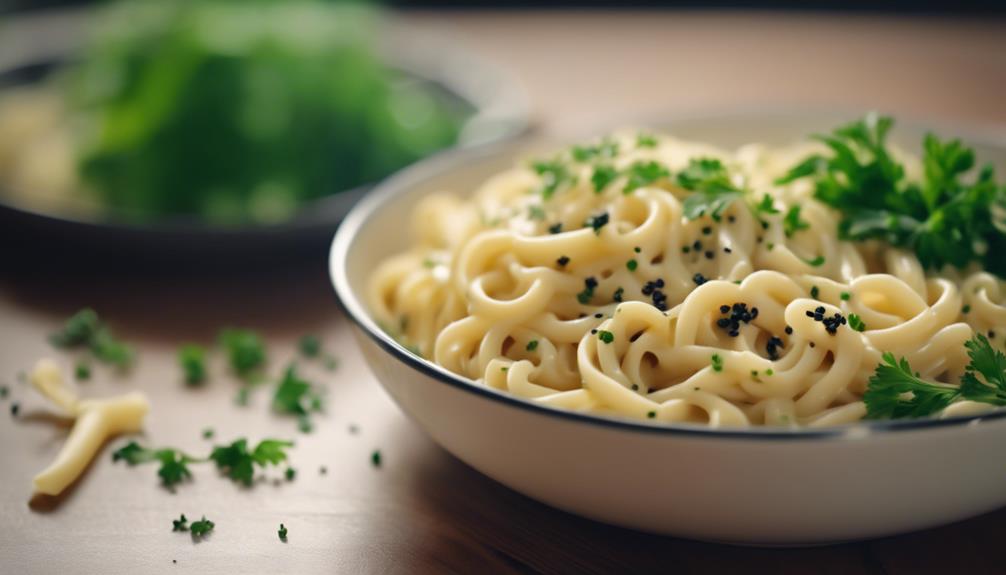
To make buttered noodles, boil your pasta until tender, then toss it with butter, Parmesan cheese, salt, and pepper.
You might want to experiment by adding extras like broccoli, garlic, herbs, or protein for extra flavor.
Whether as a standalone dish or paired with other foods, buttered noodles are versatile and simple to make.
Recipe Directions
Want to make delicious buttered noodles at home? Start by boiling the noodles until tender, then drain them.
Once drained, return the noodles to the pot and mix in a generous amount of butter, grated Parmesan, a sprinkle of salt, and a dash of pepper. The butter will coat the noodles, creating a rich and creamy base, while the Parmesan adds a savory kick.
Feel free to customize your dish by adding herbs, garlic, or your favorite protein for extra flavor.
After preparing your buttered noodles, store any leftovers in the fridge for up to five days.
When you're ready to enjoy them again, simply reheat the noodles in the microwave or on the stove for a quick and satisfying meal.
This easy recipe is perfect for busy nights when you need a comforting and tasty dinner option without spending hours in the kitchen.
Cooking Tips
Enhance the flavor of your buttered noodles by experimenting with optional additions like broccoli, herbs, shrimp, or chicken. When making buttered noodles, remember to adjust the amount of butter based on your preference. For a less saucy version, use around 4 tablespoons of butter.
After boiling the noodles until firm, draining them, and mixing in the butter, Parmesan cheese, salt, and pepper, consider adding in these extras to elevate your dish.
To store any leftovers, place the buttered noodles in an airtight container in the fridge where they'll keep well for up to five days. When ready to enjoy again, simply reheat them in the microwave or on the stove for a quick meal.
For a creative twist, try different pasta types, incorporate garlic for added flavor, or even brown the butter for a unique take on the traditional buttered noodles recipe. Experimenting with these variations can bring new dimensions to your go-to buttered noodles dish.
Recipe Tip
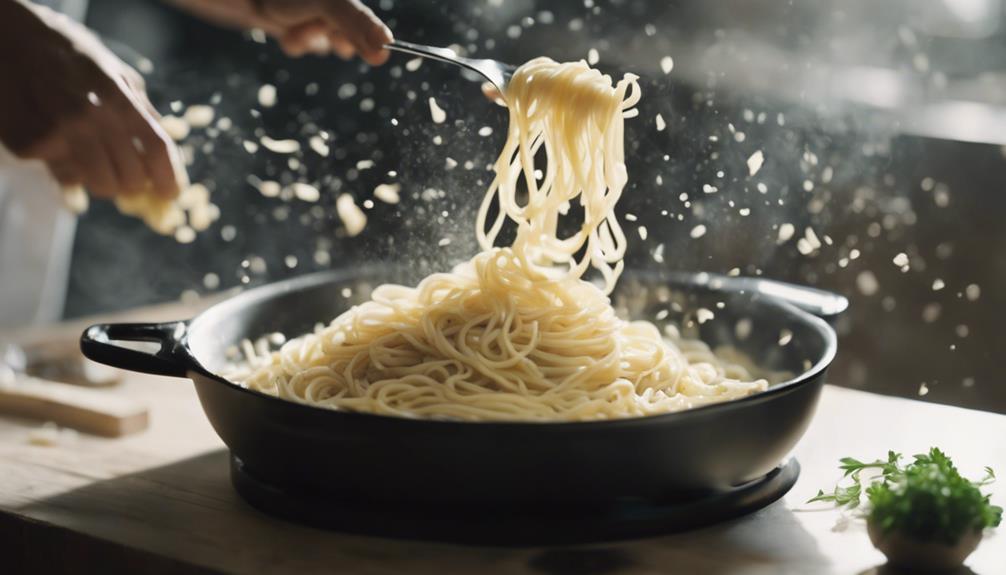
Let's talk about some essential points to enhance the flavor of your butter noodles.
Recommended noodle types that work best with this recipe.
Some creative serving suggestions to elevate your dish.
Flavor Enhancement Tips
Curious about how to elevate the flavor of your butter noodles? To enhance the taste of your dish, start by generously salting the pasta cooking water. This simple step infuses the noodles with flavor right from the start.
When choosing butter, opt for salted butter to further enhance the overall taste of your buttered noodles. For a touch of luxury, consider drizzling a bit of truffle oil over the noodles. To add depth and a cacio e pepe flavor profile, freshly grind some black pepper into the dish.
Experimenting with different noodle varieties can also enhance the overall experience. Egg noodles bring a rich and soft texture, while farfalle, spaghetti, or penne can offer unique twists on your classic buttered noodles.
Recommended Noodle Types
For your butter noodles recipe, consider choosing from a variety of noodle types to elevate the dish's texture and flavor profile. Egg noodles are a classic choice for buttered noodles, providing a familiar and comforting taste that pairs perfectly with butter and Parmesan cheese.
If you're looking to add a chewier texture to your dish, opt for farfalle noodles, which bring a unique twist to the buttered noodles experience. For those who prefer a more traditional feel, spaghetti or linguine noodles are excellent options that offer variety while still maintaining the dish's classic appeal.
If you want to make your butter noodles more playful and enjoyable, consider using macaroni noodles to bring a different texture to the plate. On the other hand, if you crave a hearty bite that complements the buttery flavors, rigatoni or penne pasta are ideal choices that will enhance the overall taste of the dish.
Serving Suggestions
Consider serving your buttered noodles as a versatile side dish that complements a wide range of main courses and salads. Here are three serving suggestions to elevate your meal:
- Side Dishes: Pair your buttered noodles with garlic chicken, meatloaf, or quinoa black bean burgers for a comforting and satisfying meal.
- Comfort Food: Enjoy your buttered noodles as a main dish alongside roasted garlic lemon broccoli, a classic Caesar salad, or a roasted vegetable medley for a cozy and familiar dining experience.
- Quick and Easy: Refrigerate any leftover buttered noodles in an airtight container for up to five days. When you're ready to enjoy them again, simply reheat in the microwave or on the stove for a quick and convenient meal option.
These serving suggestions will transform your buttered noodles into a delightful and simple dish that can be enjoyed on any busy night.
What to Serve With Buttered Noodles
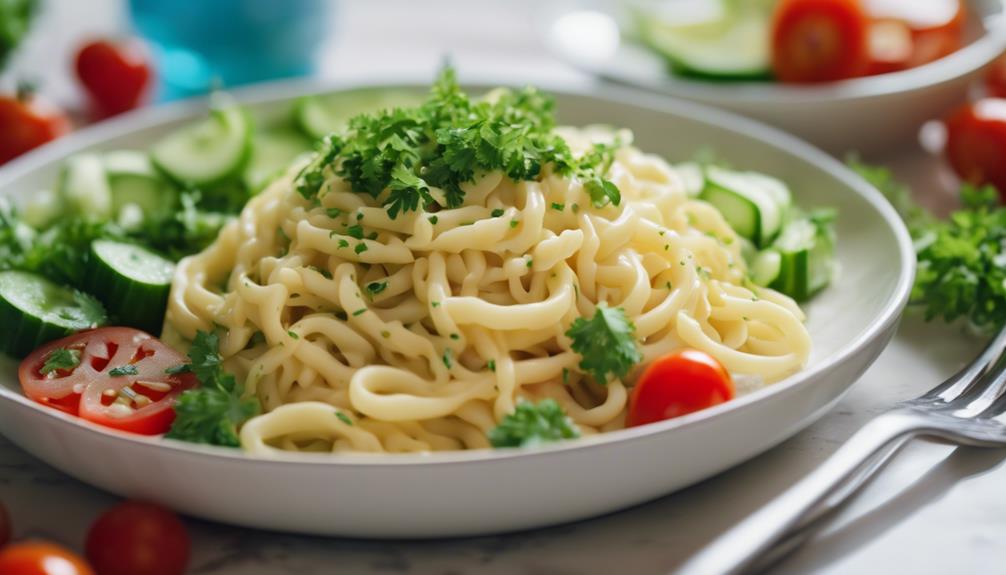
To complement your buttered noodles, consider pairing them with flavorful protein-rich dishes like garlic chicken or shrimp. These protein options not only add a savory element to your meal but also provide a well-rounded nutritional balance.
For a heartier meal, you can serve buttered noodles as a side dish with easy meatloaf or quinoa black bean burgers. If you prefer a lighter option, enjoy the buttered noodles as a main dish alongside roasted garlic lemon broccoli, a classic restaurant Caesar salad, or a roasted vegetable medley.
Adding vegetables like broccoli or asparagus to your buttered noodles not only enhances the nutritional value of the meal but also adds a pop of color and freshness to your plate.
How to Store Buttered Noodles
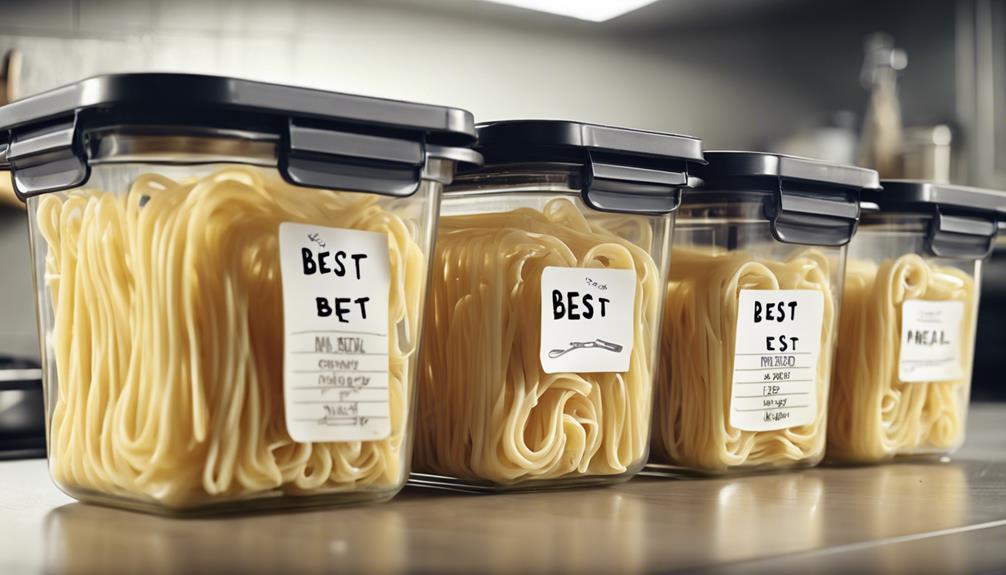
Properly store your buttered noodles in an airtight container in the refrigerator for up to five days. When dealing with leftovers, maintaining their freshness is crucial to enjoy them later. Here are some tips to help you store and reheat your buttered noodles effectively:
- Refrigeration: Place the buttered noodles in an airtight container to prevent them from absorbing other odors in the fridge and to keep them fresh for a longer period.
- Reheating: When ready to enjoy your leftovers, reheat the buttered noodles in the microwave or on the stove. Adding a sprinkle of water before reheating can help retain moisture and prevent the noodles from drying out.
- Usage: Leftover buttered noodles can be repurposed as a side dish for another meal or incorporated into different recipes to create new and exciting dishes.
Allrecipes Community Tips
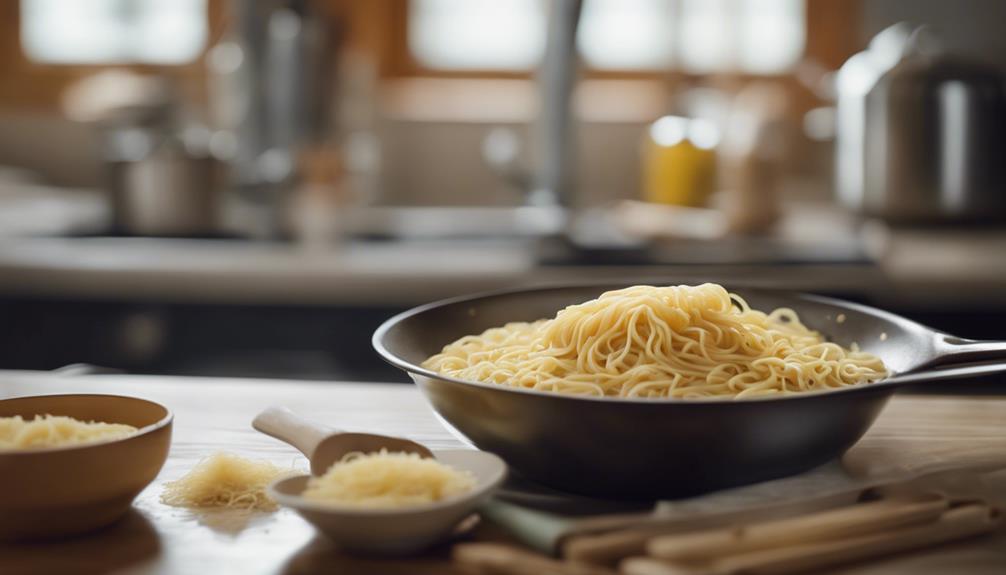
Let's see what the Allrecipes community has to say about the butter noodles recipe.
You can find valuable recommendations and insights from fellow users on how to enhance your cooking experience.
These user tips can help you tailor the recipe to your preferences and discover new ways to enjoy this classic dish.
Community Recipe Recommendations
Explore the Allrecipes community tips for enhancing your butter noodles recipe experience. Here are some recommendations to make your buttered noodles even more delicious:
- Opt for Low-Sodium Variations:
Reginamarie suggests trying a low-sodium option for your butter noodles. This small adjustment can help you control the salt content while still enjoying the rich flavor of the dish.
- Family-Friendly Favorite:
Peggy's grandchildren adore this simple and tasty buttered noodles recipe. It's a hit with kids and adults alike, making it a perfect choice for family meals or quick weeknight dinners.
- Embrace Simplicity:
Lisa Noel Rodgers appreciates the greatness that comes from using simple ingredients in this recipe. Stick to the basics and let the butter and noodles shine, creating a dish that's satisfying and comforting with minimal effort.
User Experience Insights
Discover valuable insights from the Allrecipes community on enhancing your butter noodles recipe by incorporating user-tested tips and tricks.
Users like Reginamarie have praised the low-sodium option for buttered noodles, making it a healthier choice for those watching their salt intake.
Peggy shared that her grandchildren adore buttered noodles, emphasizing its appeal to even the pickiest eaters.
Lisa Noel Rodgers appreciated the simplicity of ingredients and the delicious taste of buttered noodles, proving that sometimes the simplest recipes are the most satisfying.
The Allrecipes community has actively engaged with the buttered noodles recipe, sharing their food experiences and tips, creating a sense of community and connection over a beloved dish.
Buttered noodles have the power to evoke nostalgic memories and foster bonds through shared food experiences, making it more than just a meal but a way to bring people together.
Recipe Ingredients and Preparation

To prepare the best butter noodles, gather fettuccine noodles, butter, Parmesan cheese, salt, pepper, and fresh parsley for garnish. Here are some key steps to create the perfect dish:
- Cooking the Noodles:
Boil the fettuccine noodles until they're al dente, ensuring they have a slight bite to them. Remember to generously salt the pasta water to enhance the flavor of the noodles.
- Preparing the Sauce:
In a separate pan, melt the butter until it turns slightly browned for a nutty flavor. Then, add in the shredded Parmesan cheese and a pinch of salt and pepper to create a creamy and savory sauce.
- Bringing It All Together:
Once the noodles are cooked and the sauce is ready, toss the noodles in the sauce, ensuring each strand is well-coated. Finish off by garnishing with fresh parsley for a pop of color and added freshness to your buttered noodles.
Recipe Variations and Tips

For a more flavorful twist, consider incorporating garlic into the buttered noodles recipe. Adding minced or crushed garlic to the butter as it melts can infuse the dish with a fragrant and savory taste.
Additionally, using real shredded Parmesan instead of powdered can elevate the flavor profile of the noodles, providing a fresher and more authentic taste. To enhance the richness of the dish, try slightly browning the butter before mixing it with the noodles. This can add a nutty undertone that complements the garlic and Parmesan beautifully.
Another tip to boost the flavor of your buttered noodles is to generously salt the pasta water before cooking. Salting the water effectively seasons the noodles from the inside out, ensuring a more delicious end result.
Ultimately, for the best taste experience, shred your Parmesan cheese yourself rather than using pre-shredded varieties. This will result in a fresher and more flavorful outcome that truly shines in this simple yet satisfying dish.
Personal Experiences and Engagement
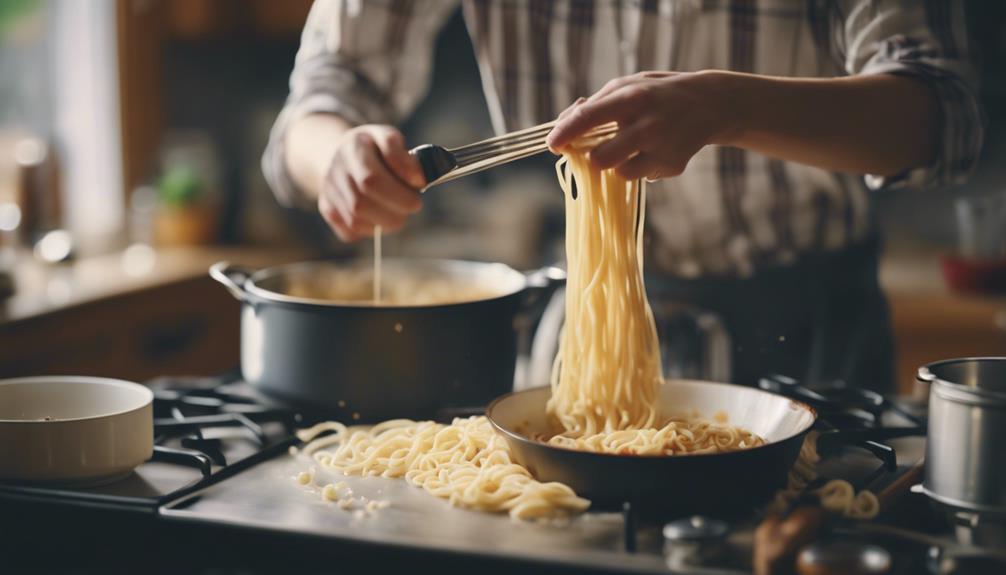
Explore the heartwarming narratives and connections shared by individuals within the community about their experiences with buttered noodles.
The memories associated with this simple dish often evoke feelings of nostalgia, taking people back to cherished moments from their past.
The simplicity of the buttered noodles recipe not only offers a quick and easy meal solution but also serves as a reminder of the beauty found in uncomplicated cooking methods.
Here are three engaging points to ponder:
- Community Bonding: Buttered noodles have a unique way of bringing people together, whether it's through shared childhood memories or communal gatherings centered around this beloved dish.
- Nostalgic Comfort: The familiar taste of buttered noodles can transport you back to simpler times, offering a sense of comfort and nostalgia that resonates with many.
- Creating New Memories: While rooted in tradition, buttered noodles also provide an opportunity to create new memories with loved ones, continuing the legacy of this classic recipe within the community.
Simplifying Cooking
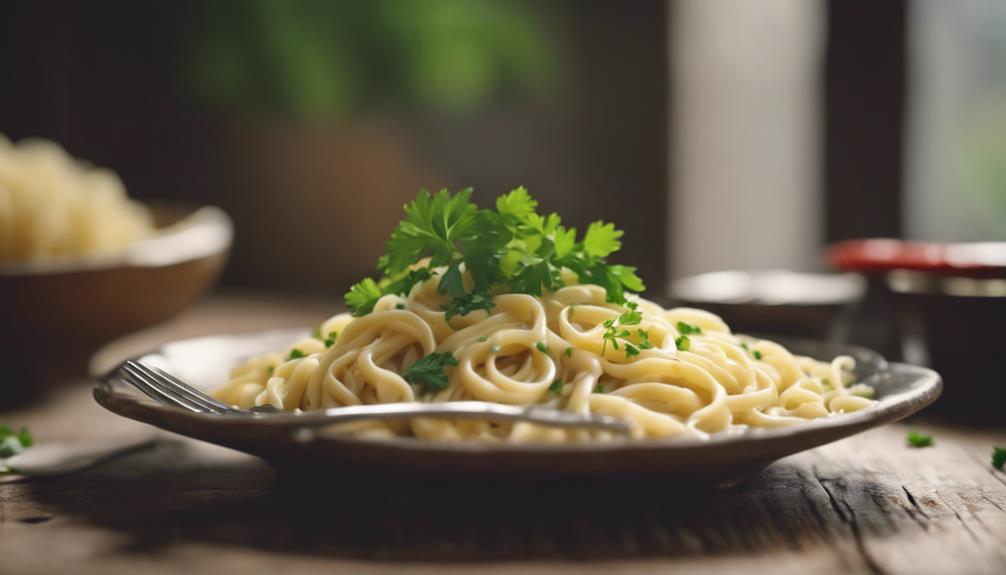
Simplify your cooking routine by focusing on minimal ingredients and easy preparation methods for quick and satisfying meals. When it comes to making delicious dishes like buttered noodles, simplicity is key.
Opt for simple ingredients like noodles, butter, salt, and pepper to create a flavorful meal in no time. Embrace an easy preparation method by boiling the noodles until al dente, then tossing them with melted butter, salt, and pepper for a classic and comforting dish.
Taking a minimalist approach to cooking not only streamlines the process but also allows the essential flavors to shine through. By keeping the ingredients and steps to a minimum, you can enjoy a delicious meal without the added stress of complex recipes.
This approach is perfect for busy nights when you need a quick and no-fuss dinner option. So, next time you're in a rush, remember that simplicity in cooking can lead to tasty and satisfying results.
Frequently Asked Questions
How to Enhance Buttered Noodles?
To enhance buttered noodles, liberally salt the pasta water for more flavor. Use salted butter and drizzle truffle oil for a gourmet touch. Add freshly ground black pepper for a cacio e pepe flair. Experiment with different noodle types like egg noodles or spaghetti.
What Does Putting Butter in Noodles Do?
Adding butter to noodles creates a creamy and flavorful coating that enhances their taste and texture. It prevents sticking, ensuring a smooth eating experience. Incorporating butter provides comfort and satisfaction, making it a delightful meal option.
What to Add to Noodles for Flavor?
For flavor in noodles, try adding salted butter for a savory touch. Enhance with truffle oil for gourmet flair and black pepper for a cacio e pepe boost. Experiment with herbs like parsley or red pepper flakes for depth.
Can You Make Homemade Noodles the Night Before?
You're in luck! Homemade noodles can be prepped the night before. Remember to slightly undercook them to avoid sogginess. Store in the fridge sealed. On busy nights, just boil them a bit before serving. Easy peasy!
Conclusion
Next time you're in a rush and need a quick meal, remember this buttered noodles recipe!
Did you know that pasta is the second most popular dish in the world, with over 600 different shapes and varieties to choose from?
So why not add this simple and delicious dish to your go-to recipes for busy nights?
Enjoy!
